3 Amazing Facts You Might Not Know About Atacama Desert
Finally, some interesting Atacama Desert facts to quench your curiosity most one of the nearly undeniably interesting and odd-looking places on globe that most travelers often include in their loftier-priority list of places to visit. Imagine going somewhere that has been known for its extreme temperature and about lack of atmospheric precipitation? It would probably lead you to some empty water bottles, simply seeing it personally would likewise strike y'all with awe in an instant due to its magnificent landscapes, history, culture, and ecosystem.
Who wouldn't want to be in a place that looks like Mars? In improver, the Atacama Desert displays articulate skies from day until night, then stars are fully visible for travelers to gaze at. With an array of accommodations to choose from, tourists tin fully enjoy their stay not just in some parts of the desert just too in Chile in general.
- The Atacama Desert is a desert plateau in S America roofing a 1,600 km strip of country on the Pacific coast, w of the Andes Mountains.
- The Atacama Desert is the driest non-polar desert in the world.
- It is the only true desert to receive less precipitation than the polar deserts.
- Information technology is the largest fog desert in the world.
- The desert is equanimous of stony terrain, salt lakes, sand, and felsic lava that flows towards the Andes.
- The desert owes its extreme aridity to a constant temperature inversion. It is due to the cool due north-flowing Humboldt ocean current and the presence of the strong Pacific anticyclone.
- According to the World Wide Fund for Nature, the Atacama Desert ecoregion occupies a continuous strip for well-nigh 1,600 km.
- The National Geographic Society considers the coastal area of southern Republic of peru to be part of the Atacama Desert.
- The Atacama Desert has a large woodland expanse known as Pampa del Tamarugal but demand for firewood and silver mining in the 18th and 19th centuries resulted in widespread deforestation.
- The desert has an well-nigh total lack of precipitation.
- The Atacama Desert is the driest place in the world.
- Show suggests that the Atacama may not have had any significant rainfall from 1570 to 1971.
- The Atacama Desert may be the oldest desert on world.
- It has experienced extreme hyper aridity for at least 3 million years, making information technology the oldest continuously barren region on earth.
- The Atacama is so arid that many mountains higher than 6,000 m (20,000 ft) are completely gratis of glaciers.
- In June 1991 Antofagasta and Taltal, and inland regions as far as Calama, received unusual rainfall leading to the formation of a series of mudflows that killed 91 people.
- The Infinite Odyssey: Voyage to the Planets has used the Atacama Desert to film its Mars scene.
- NASA is using the desert to test instruments for time to come space missions because of its uniqueness.
- Inside the border of this desert exist over 500 species of plants.
- The climate of the Atacama Desert limits the number of animals living permanently in this extreme ecosystem.
01 Information technology has the largest supply of sodium nitrate in the globe.
02 Two countries went to state of war to claim this region.
03 The desert has extreme temperatures.
04 It has preserved thousand-year-old mummies.
05 The desert is a great place to written report astronomy.
06 Around one million people call the Atacama Desert home.
07 The Atacama Desert gets almost no rain.
08 The extreme ecosystem of the Atacama makes survival difficult for animals.
09 The Atacama Desert was at the center of the world's attending in 2010.
10 The Atacama Desert is one of the top three destinations to visit in Chile.
xi Humans accept inhabited the desert since the Stone Age.
12 The Chinchorro culture adult between 7000 BCE and 1500 BCE.
xiii The southern part of the Atacama is domicile to the ethnic Diaguita culture.
fourteen Abandoned mines accept become famous tourist spots.
15 The Atacama Desert even so supplies metal and non-metallic resources.
16 The observatories in the desert are dwelling to some special telescopes.
17 Ecotourism has become a big business in the Atacama region.
18 The El Tatio Geyser Field sits at around fourteen,000 feet above sea level.
19 Yous can find flamingos in the Atacama Desert.
20 The Atacama Desert is well-nigh La Serena, one of the fastest-growing cities in Chile.
21 The Uyuni Common salt Flats is i of the most popular attractions in the Atacama region.
22 Arica is a urban center of eternal spring.
23 Antofagasta is Chile's second largest urban center.
24 Salar de Atacama is the largest salt flat in Chile.
25 It is possible to wing directly into the Atacama Desert.
26 Travel across the desert in a 4WD vehicle.
27 Guided tours are the well-nigh popular way to reach the sites in the Atacama Desert.
28 A tiny humanoid skeleton was discovered in the Atacama Desert.
29 Despite the oestrus, some animals thrive in the Atacama Desert.
xxx There are penguins in this desert.
It has the largest supply of sodium nitrate in the world.
The region has a lot of abandoned mining towns reminiscing the boom of sodium nitrate mining in the 1940s. Manufacturers utilize this chemical in producing fertilizers and explosives amongst other things.
Two countries went to state of war to claim this region.
War has occurred between Bolivia and Chile in the late 1800s to achieve consummate dominance in this region. Both countries claimed to exist the rightful owners of this region due to its huge mining potential, and at the end of the war, Chile took command of the unabridged region.
The desert has extreme temperatures.
During the twenty-four hour period, temperatures in the desert can reach around twoscore°C (104°F). At night, these temperatures tin fall to v°C (41°F). The climate is magnificent throughout the twelvemonth, with more than ninety% of the days being radiant. For 10 to 12 nights each month, at that place is an astonishing moon and you tin bask the darkness of the night with its fresh air and lack of clouds, which makes the stars smooth like no other identify on earth.
Information technology has preserved thousand-year-former mummies.
These mummies predate the Egyptian mummies past thousands of years, and the extreme lack of wet helps in the preservation of these samples. The early mummies in Egypt dated at 3000 BC pale to compare with Atacama Desert's artificially mummified man remains dated around 7020 BC.
The desert is a great identify to written report astronomy.
The Atacama Desert has go the dwelling house of the largest ground telescope in the world. Many would report the germination of stars with the assistance of the images captured past the 66 radio telescopes. Truly, the Atacama Desert is 1 of the few locations on the earth with 300+ days of clear skies in a year, forth with no light pollution and its high distance, making it perhaps the best place in the world for observatories.
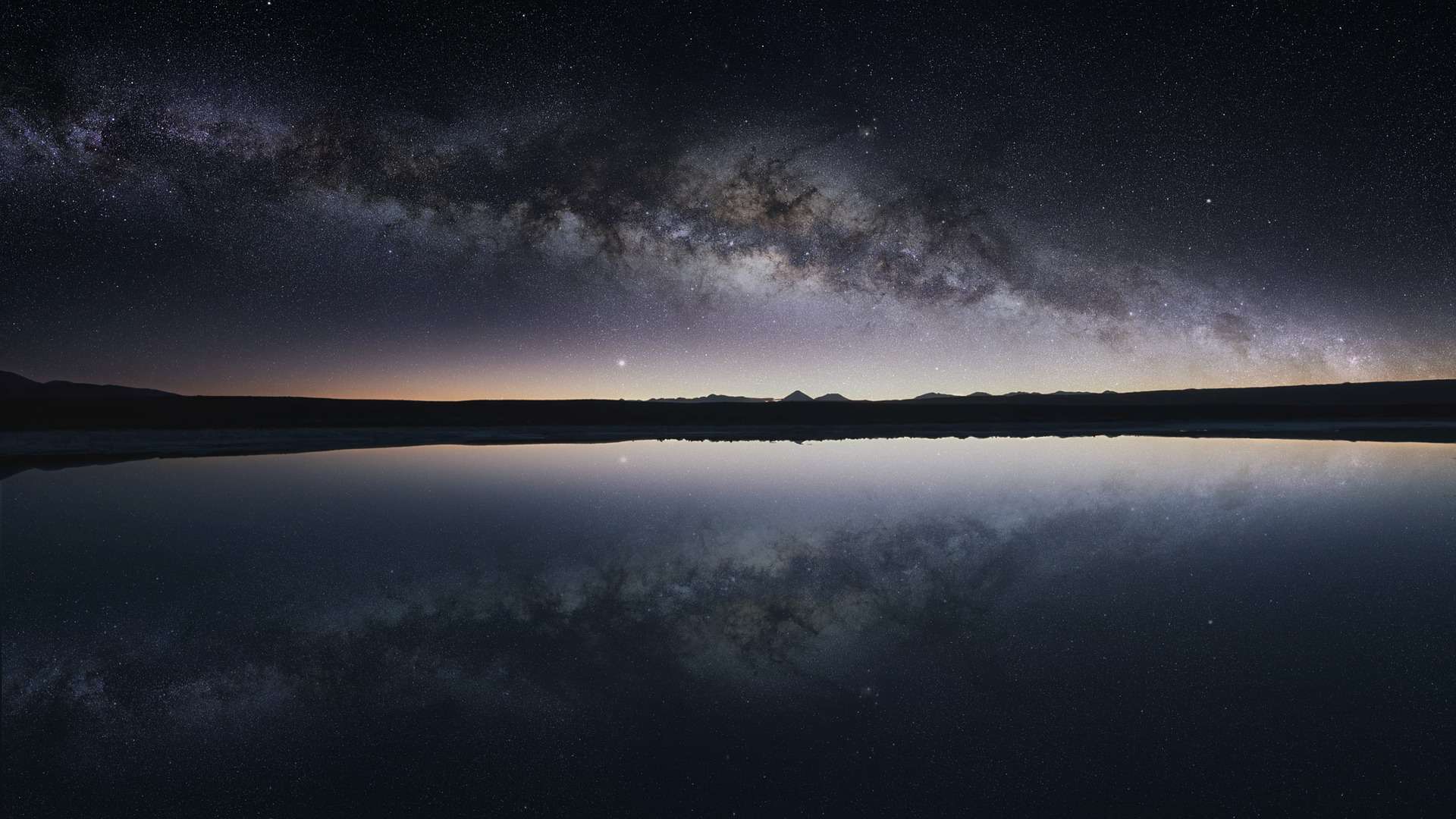
Around i million people telephone call the Atacama Desert home.
Surprisingly, the driest desert in the world is home to a lot of people. They live in coastal line-fishing villages, mining areas, and oasis towns growing dry-weather produce such equally olives, tomatoes, and cucumbers, and herding alpacas for a living.
The Atacama Desert gets almost no rain.
The Andes and the Chilean Declension Range take sufficient height preventing moisture advection from either the Pacific Ocean or the Atlantic Ocean. This has caused the aridity of the Atacama Desert to almost not receiving any rainfall.
The extreme ecosystem of the Atacama makes survival difficult for animals.
Despite this extreme situation, in a couple of areas, several animals can thrive such as carmine scorpions, grey foxes, desert wasps, and butterflies, since these species can cope with the dry surroundings. Some parts of the desert have never recorded precipitation and are so arid that no plants or animals can survive. However, in some places, the bounding main provides enough moisture for seasonal plants and a few brute species to live on.
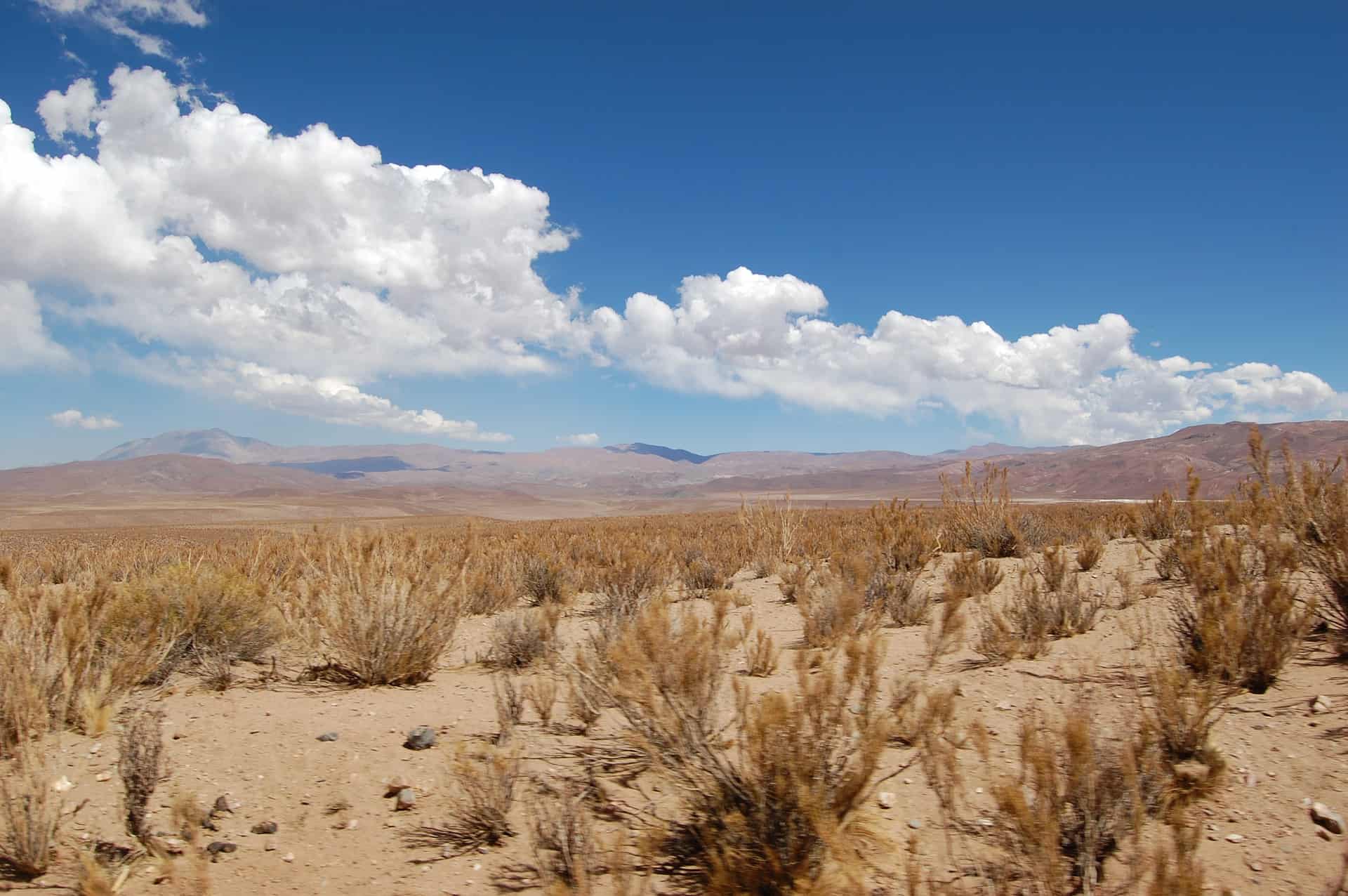
The Atacama Desert was at the centre of the globe's attention in 2010.
An blow trapped 33 miners for 69 days long in a 120-year-old copper-gold mine. Miraculously, they were successfully rescued on 13th October 2010 without any casualties.
The Atacama Desert is one of the top three destinations to visit in Chile.
The Atacama Desert with its otherworldly advent has gained a lot of attention from all tourists in all walks of life. If you are planning to visit Chile, then the Atacama Desert is one of the top three destinations that you should finish by. There are several archeological sites in the Atacama Desert, including Tulor, which features the remains of round adobe buildings in the Valley of the Moon.
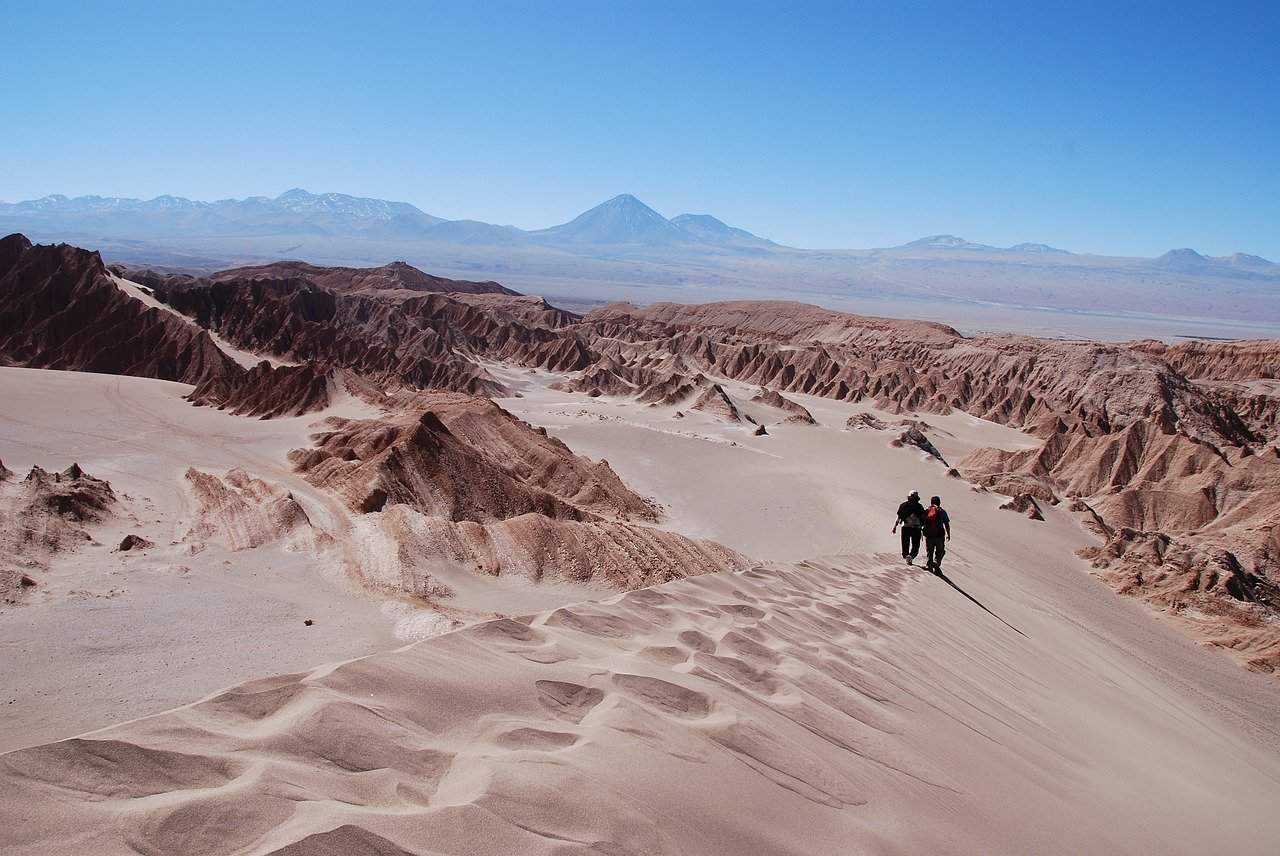
Humans have inhabited the desert since the Stone Historic period.
Since the Paleolithic or the Stone Age, humans have inhabited the Atacama Desert, which concluded effectually eight,000 years agone. San Pedro de Atacama was probable the centre of an ancient civilization then. Still, the Atacameños are now extinct.
The Chinchorro culture developed between 7000 BCE and 1500 BCE.
The Chinchorro are not bad fishermen and great weavers. They have led a sedentary lifestyle predominantly supported by fish, shellfish, and sea mammals. After receiving influences from the Andean Plateau around 4000 BC, their civilization adopted agriculture. Much later, it came under the influence of the Tiwanaku Empire.
The southern part of the Atacama is home to the indigenous Diaguita culture.
The southern part of the Atacama is dwelling to the indigenous Diaguita culture, as information technology was their cultural precursors, the Las Ánimas and El Molle peoples. Additionally, the Aymara people populate the Altiplano regions of the Andes, most of which are in Bolivia, just some of which spreads into the Atacama Desert.
Abased mines take go famous tourist spots.
Technological advancement has left a lot of saltpeter mines and in return, became a pop site for tourism. In fact, UNESCO has named Humberstone and Santa Laura Saltpeter as a world heritage site last 2005. The people that worked the mines came from Bolivia, Republic of peru, and Chile.
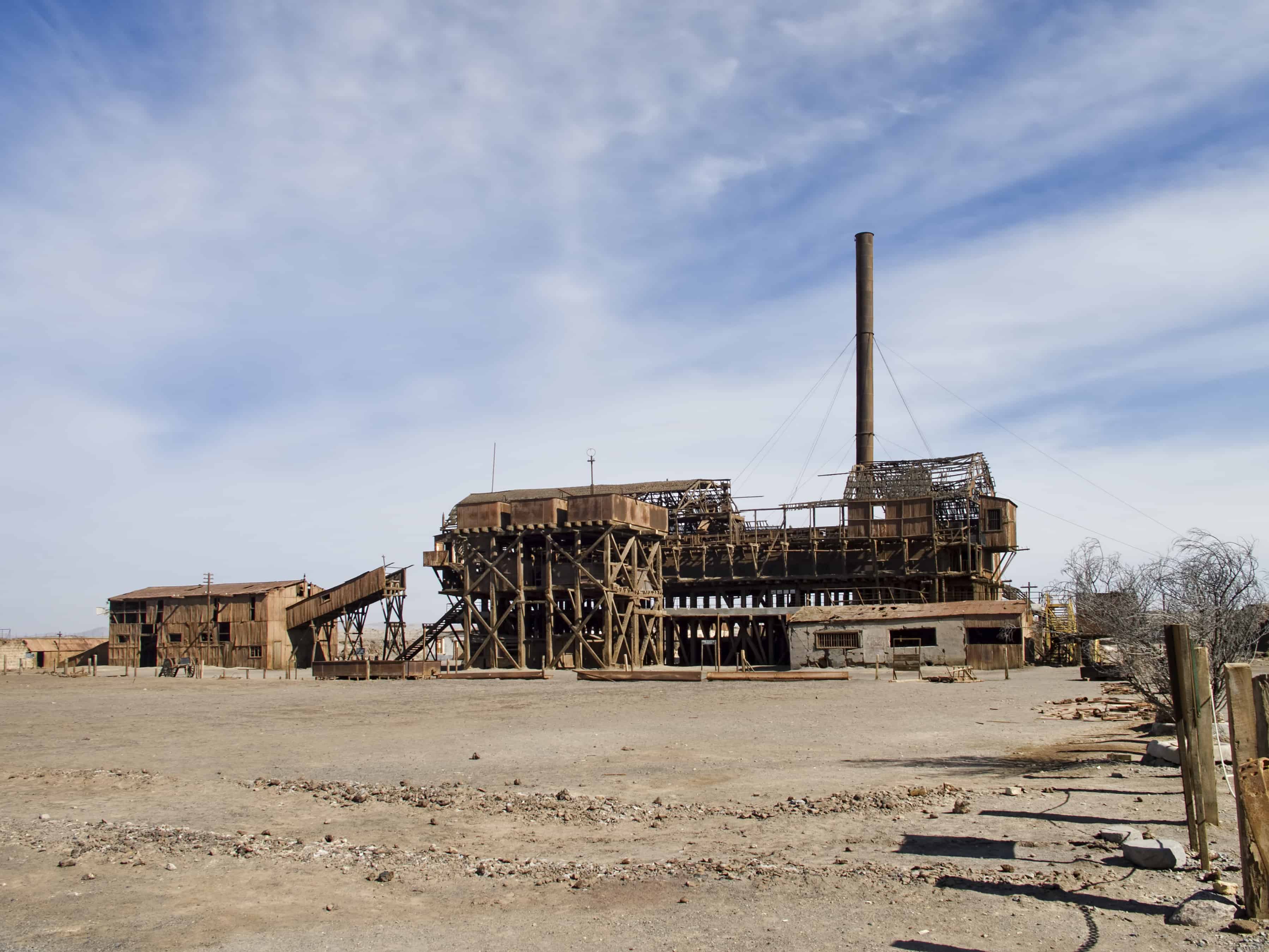
The Atacama Desert still supplies metal and not-metal resources.
After the collapse of the nitrate business, mining did not stop for the people who want to earn more from the Atacama Desert. The desert still supplies about one-third of the world's copper and is a source of other metals, including gilded, silver, and iron. People also mine boron, lithium, and salts from the desert.
The observatories in the desert are domicile to some special telescopes.
The Very Large Telescope consists of four dissever units that can work together to provide extremely high-resolution shots of space. Meanwhile, the Atacama Large Millimeter Array uses a compilation of 66 radio telescopes to detect electromagnetic radiation at sub-millimeter wavelengths.
Ecotourism has get a big business concern in the Atacama region.
The Atacama region is rich in wonderful natural sceneries that would make travelers respect nature fifty-fifty more. Ecotourism prospers particularly in the area around San Pedro de Atacama, Republic of chile. Those who visit the Andean town will find lots of intriguing attractions nearby.
The El Tatio Geyser Field sits at around fourteen,000 feet in a higher place sea level.
El Tatio is a geyser field located in the Andes Mountains of northern Republic of chile at xiv,170 feet above sea level. It is the 3rd-largest geyser field in the world and the largest in the Southern Hemisphere. El Tatio is a geothermal field with many geysers, hot springs, and associated sinter deposits. These hot springs somewhen form the Rio Salado, a major tributary of the Rio Loa, and a major source of arsenic pollution in the river.
You tin can find flamingos in the Atacama Desert.
Although Chile's extreme environment poses distinct challenges for all inhabitants, the resilient Atacama Desert flamingo is one creature that can conform to even the harshest of them all. They are Chile'southward hardiest avian citizen in the desolate Atacama Desert. The atomic James', the sizable and brilliantly pink Chilean, and the yellow-legged Andean are the three species of flamingos that developed unique adaptations to thrive side by side in the driest non-polar desert on the planet.
The Atacama Desert is almost La Serena, one of the fastest-growing cities in Republic of chile.
La Serena is 1 of the fastest-growing cities with a population of roughly 200,000. The city is an important tourist destination, particularly during the summer, where people go to visit the beaches. It is in the headquarters of the Academy of La Serena and is likewise home to the Roman Catholic Archdiocese of La Serena, one of v Catholic Archdioceses of the Catholic Church in Chile.
The Uyuni Table salt Flats is one of the most popular attractions in the Atacama region.
Locally known as Salar de Uyuni, the globe's largest common salt flat spans some 4,000 square miles. It has a layer of salt a few meters thick that covers the entire infinite and contains over half of the world's known lithium reserves. There is very footling vegetation or flamingos feeding on pink algae here. Unsurprisingly, salt mining is big business concern in the Uyuni Common salt Flats.
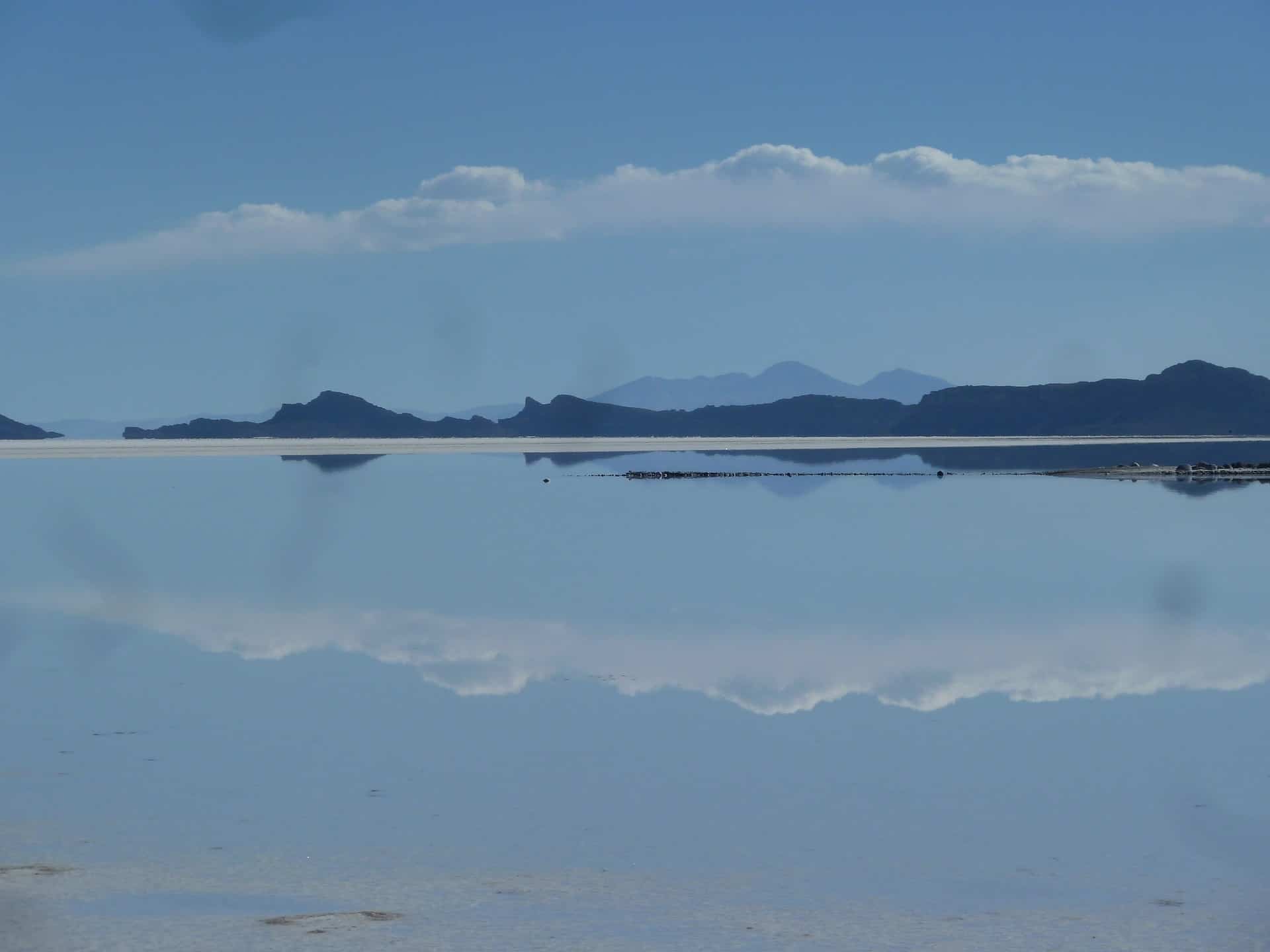
Arica is a city of eternal spring.
Arica is a port town in Chile, with a very mild climate located on the northern side of the Atacama Desert. A lot of Bolivians are frequent goers to its beaches. Arica has long been an important surface area since it has some national parks nearby, a nice shopping middle, and an erstwhile battlefield called El Morro.
Antofagasta is Chile's second largest city.
Antofagasta is a jumble of busy streets, with an overworked population that seems more than interested in modern malls than touristy markets. Information technology'due south a spot most people tend to skip when exploring the Atacama Desert. However, it may appeal to those who are into urban sprawl and commerce.
Salar de Atacama is the largest salt flat in Chile.
The salt flat encompasses three,000 km (1,200 sq mi). Information technology is about 100 km (62 mi) long, and 80 km (fifty mi) wide, which makes it the third-largest in the earth. Located 55 km (34 mi) south of San Pedro de Atacama, information technology is surrounded past mountains and has no drainage outlets.
Information technology is possible to fly direct into the Atacama Desert.
The closest airport to San Pedro de Atacama is in Calama, which is roughly an hr'due south drive away. To go to Calama, international flights volition go through Santiago and and then puddle-bound to the desert.
Travel beyond the desert in a 4WD vehicle.
The northern tip of Chile, the Atacama Desert, and its environment offer a fantastic setting for a route trip, particularly off-route. Using a 4WD vehicle, travelers will get to see miles of the expansive desert.
Guided tours are the most popular way to accomplish the sites in the Atacama Desert.
This rugged, remote region isn't a identify for easy-access public transportation. And then, embarking upon a thorough visit requires availing of planned tours.
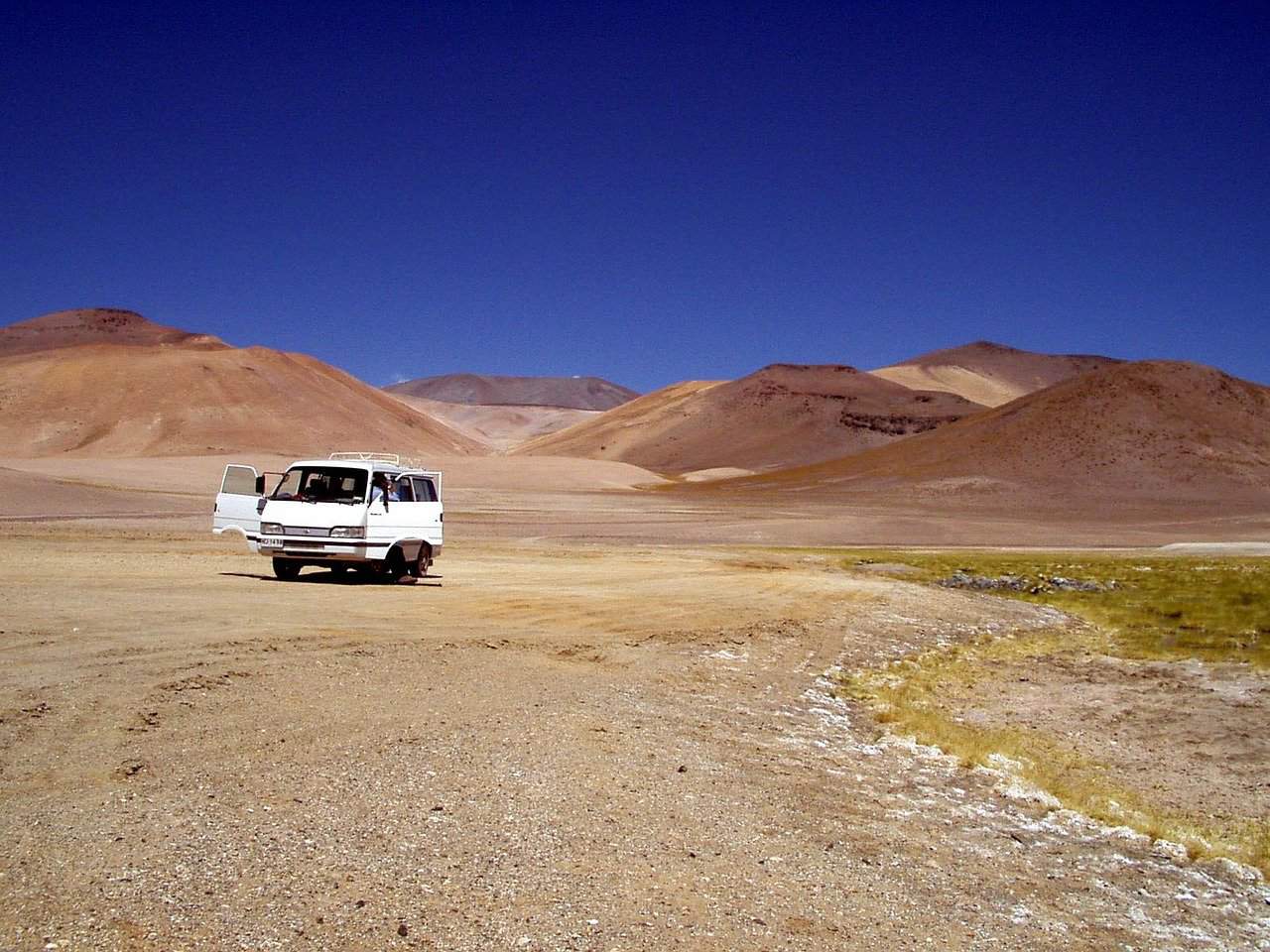
A tiny humanoid skeleton was discovered in the Atacama Desert.
It was only xv cm long and its ribs and caput were elongated and narrow which gave it a very foreign appearance, leading enough of people to speculate that it had to be an alien. However, DNA and x-ray analysis showed information technology to be human. Some scientists believed it to be the remains of a half-dozen to eight-year-old child with an unidentified medical status due to the density of its teeth and other skeletal features.
Despite the heat, some animals thrive in the Atacama Desert.
The lack of precipitation and the loftier mineral content of the soil means that in that location is a full absenteeism of vegetation in the interior. Most plants and animals of the region cling to the shoreline and coastal river valleys. These include llamas, vicunas, alpacas, huemul deer, mice, grayness play tricks, and viscacha.
There are penguins in this desert.
The Humboldt penguin is a top predator endemic to the due west coast of S America. Their breeding distribution ranges from southern Chile along the barren coastal regions of the Atacama Desert to subtropical Isla Foca in northward Peru. To escape the heat, they swim in the Humboldt currents created in the coastal waters of Chile.
congdonancentiond.blogspot.com
Source: https://facts.net/atacama-desert/
0 Response to "3 Amazing Facts You Might Not Know About Atacama Desert"
Post a Comment